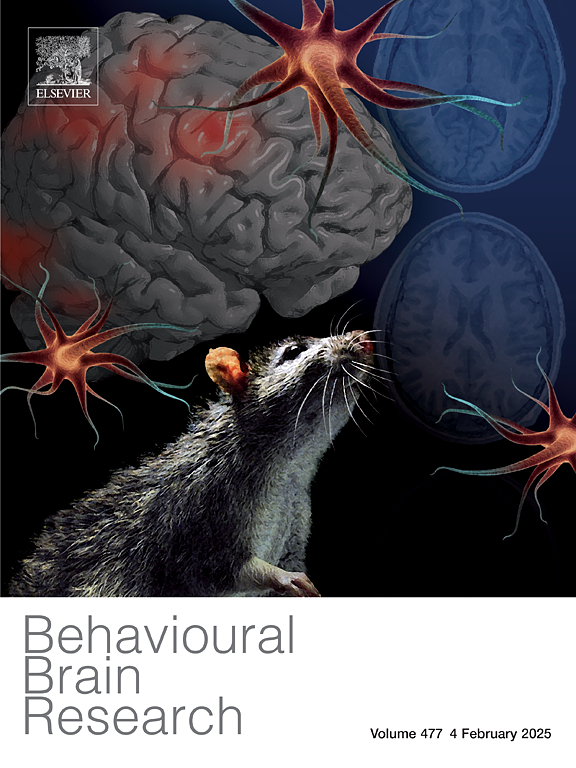Region-specific cognitive effects of HD-tDCS in older adults: M1, DLPFC, and cerebellum
IF 2.6
3区 心理学
Q2 BEHAVIORAL SCIENCES
引用次数: 0
Abstract
While regions like the primary motor cortex (M1), left dorsolateral prefrontal cortex (DLPFC), and cerebellum are linked to cognitive functions, it is unclear which offers the greatest cognitive benefit. This study aimed to assess the effects of high-definition transcranial direct current stimulation (HD-tDCS) on these regions, focusing on inhibitory control, cognitive flexibility, and working memory. This parallel, randomized, double-blinded, and controlled trial involved 80 older adults, randomly assigned to one of four groups: anodal stimulation of M1, left DLPFC, cerebellum, or sham. Inhibitory control was assessed using reaction time (RT) and rate-correct score (RCS) from a Go/No-Go task. Trail Making Test A (TMT-A) and B (TMT-B) measured processing speed and cognitive flexibility, while the backward digit span test evaluated working memory. All assessments were conducted pre- and post-stimulation. Notably, cerebellum stimulation significantly improved working memory (p = 0.010), whereas M1, DLPFC, and sham did not. Significant interaction effects emerged for TMT-A and TMT-B, with both M1 and DLPFC stimulation enhancing performance (TMT-A: p = 0.005, p = 0.025; TMT-B: p < 0.001, p = 0.045, respectively), while cerebellum and sham had no significant impact. Additionally, RT and RCS showed no significant effects. Anodal stimulation of M1 and DLPFC improved cognitive flexibility and processing speed, whereas cerebellum stimulation selectively enhanced working memory. However, inhibitory control did not improve, highlighting the need for further tailored interventions. These findings underscore distinct region-specific effects of tDCS on cognitive performance in older adults.
求助全文
约1分钟内获得全文
求助全文
来源期刊

Behavioural Brain Research
医学-行为科学
CiteScore
5.60
自引率
0.00%
发文量
383
审稿时长
61 days
期刊介绍:
Behavioural Brain Research is an international, interdisciplinary journal dedicated to the publication of articles in the field of behavioural neuroscience, broadly defined. Contributions from the entire range of disciplines that comprise the neurosciences, behavioural sciences or cognitive sciences are appropriate, as long as the goal is to delineate the neural mechanisms underlying behaviour. Thus, studies may range from neurophysiological, neuroanatomical, neurochemical or neuropharmacological analysis of brain-behaviour relations, including the use of molecular genetic or behavioural genetic approaches, to studies that involve the use of brain imaging techniques, to neuroethological studies. Reports of original research, of major methodological advances, or of novel conceptual approaches are all encouraged. The journal will also consider critical reviews on selected topics.
 求助内容:
求助内容: 应助结果提醒方式:
应助结果提醒方式:


